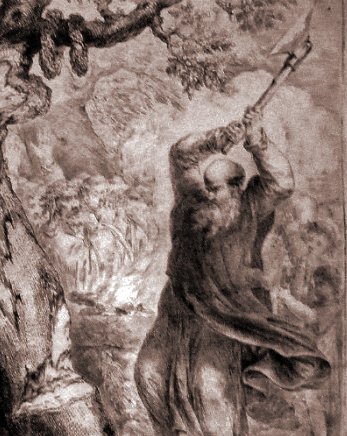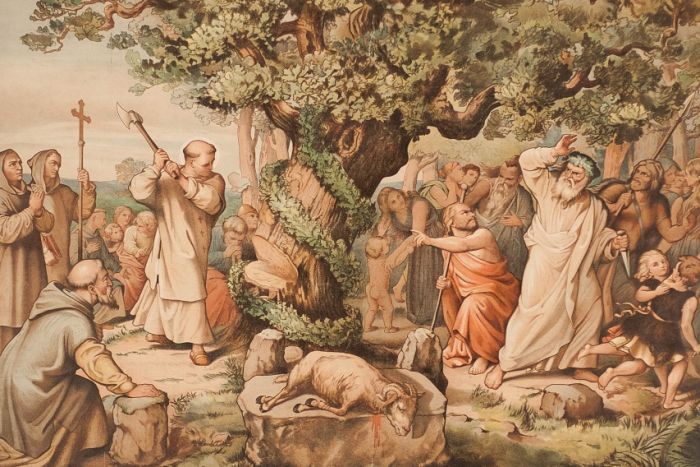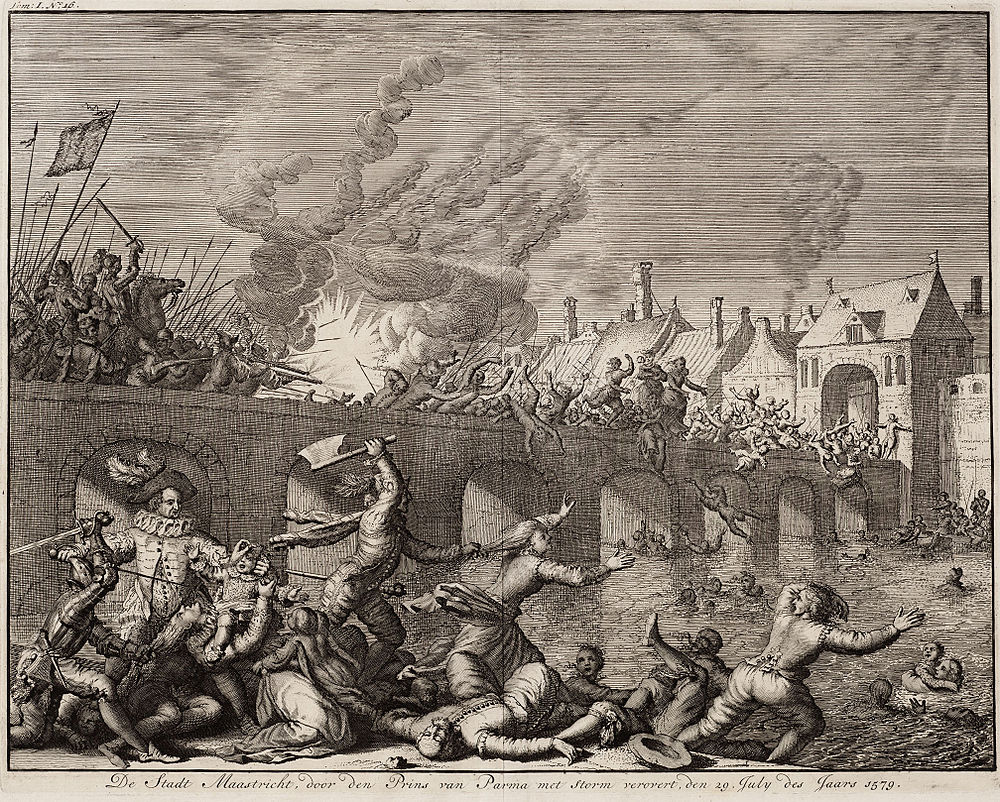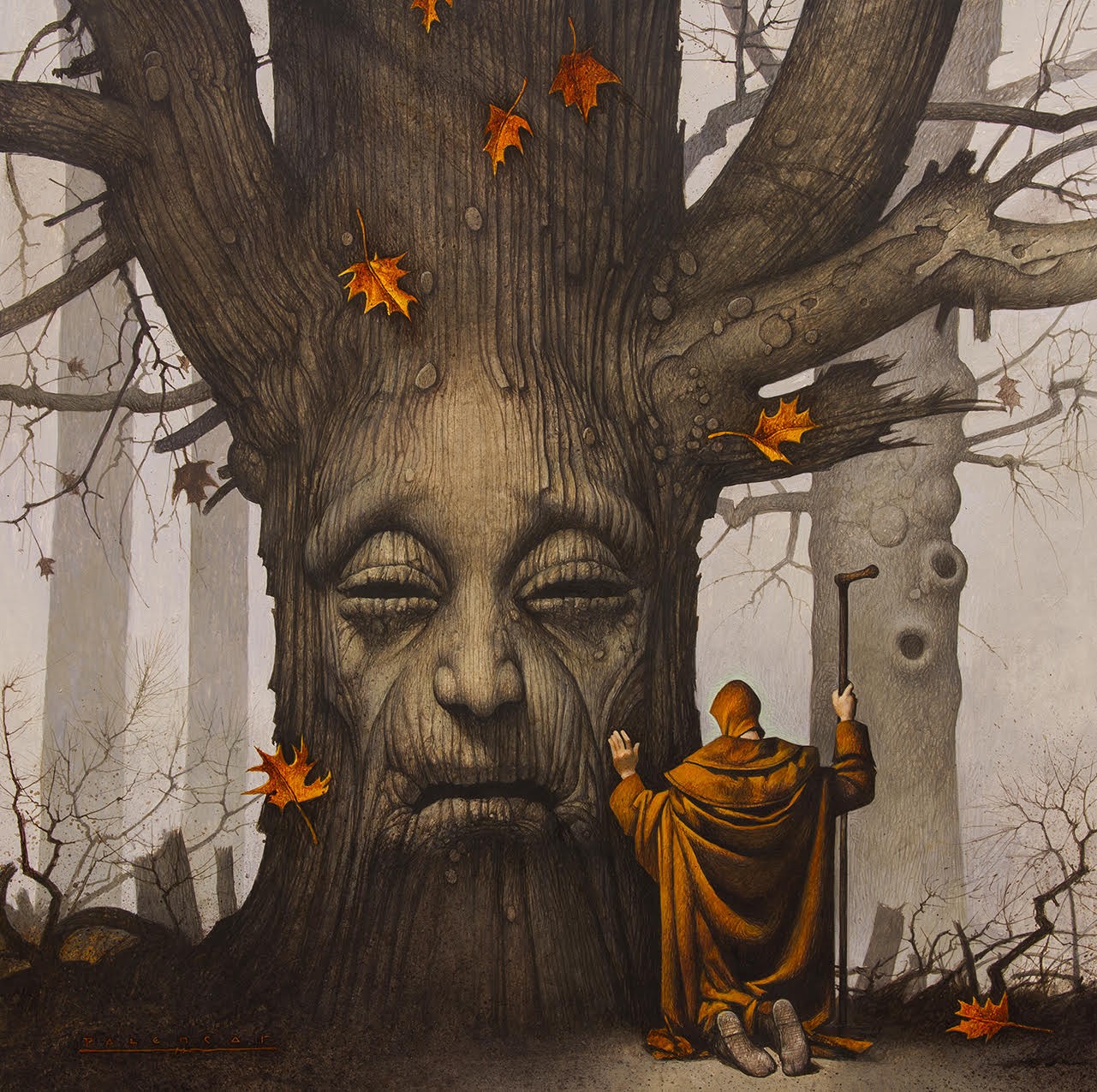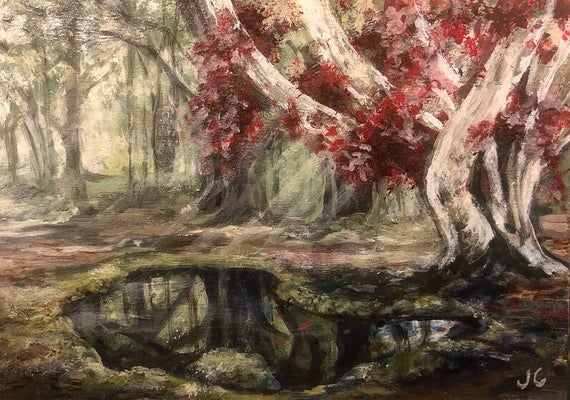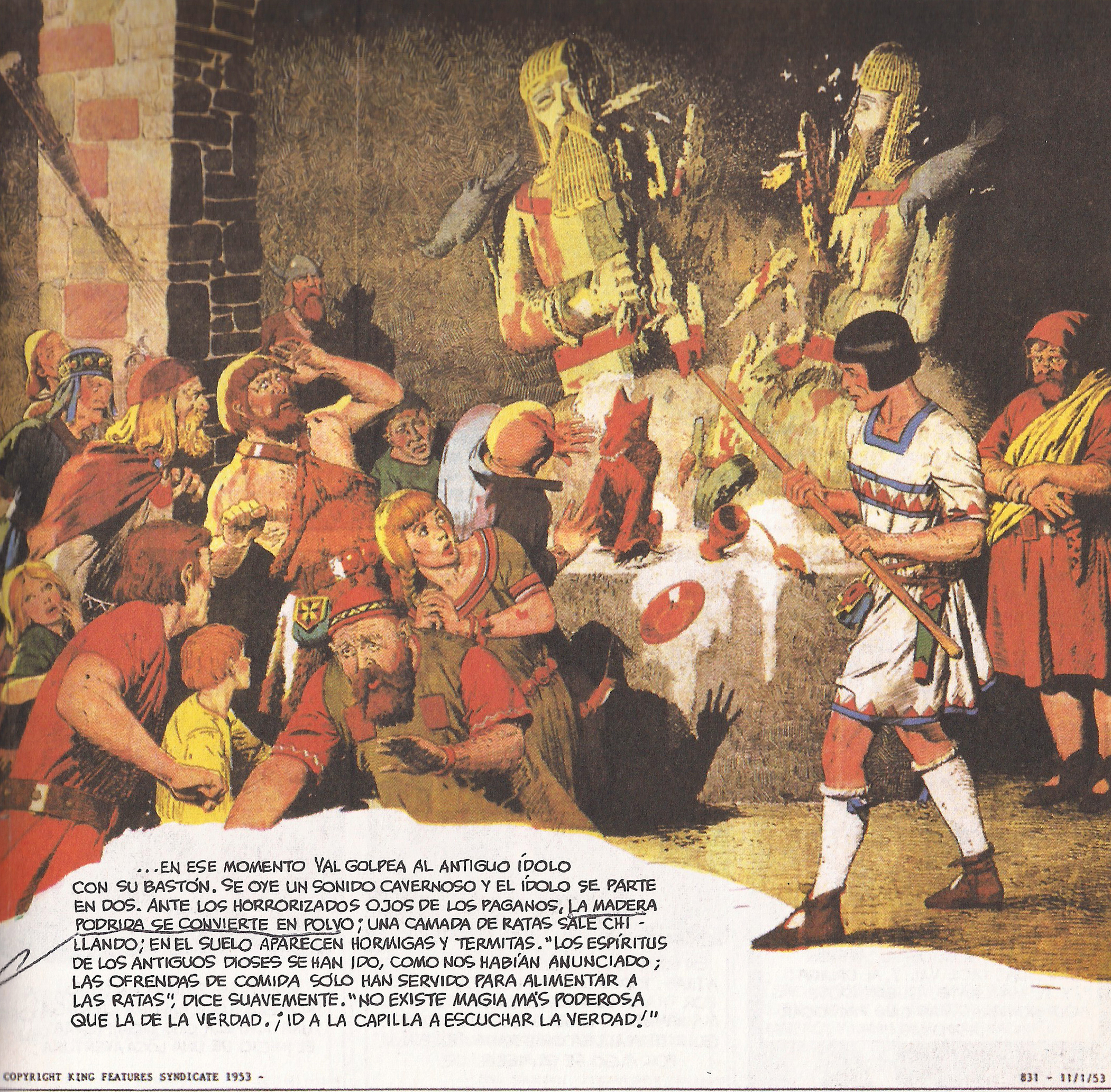by Dietrich Schuler
Editor’s note: This is the German-English translation of the first article we have published in German at the German section of The West’s Darkest Hour.
______ 卐 ______
 If we try to fathom the special fate of the Germans within the framework of the European tragedy, it is not enough to look at the superficial slogans of daily politics, the propaganda theses of the world wars, the mutual prejudices of the European peoples or the moralising blame of re-education. Also, the rather psychological argument that the aversion against the German is rooted in his general efficiency doesn’t probe deeply enough, although there may be a great deal of truth in it.
If we try to fathom the special fate of the Germans within the framework of the European tragedy, it is not enough to look at the superficial slogans of daily politics, the propaganda theses of the world wars, the mutual prejudices of the European peoples or the moralising blame of re-education. Also, the rather psychological argument that the aversion against the German is rooted in his general efficiency doesn’t probe deeply enough, although there may be a great deal of truth in it.
It has been almost completely overlooked that the birth of anti-Germanism already occurred at the beginning of Christianisation. The Christian apostles first gathered around themselves everywhere the proletarian masses, the poor, the badly off and the socially weak of the ancient world. Christianity was nothing else than a pre-Marxism in the magical feeling of life of that time. ‘Evil’ then, for the early baptised, was everything that shone in the Roman Empire: the rulers, the leaders in politics, economics, art and science, the military and administrators. Christianity thus contained—Nietzsche had recognised this crystal-clearly—an ancient slave revolt against everything high and well-bred, and the mean vindictiveness of that lower-class revelled in their lust to see the hated, envied and secretly admired languish in the hottest hell. Therefore, this religion had to be anti-Germanic in and of itself. The heathen races and peoples of Central and Northern Europe, with their elementary joy of being and sensuality, formed the direct antipode to the Christian state of mind. In particular, it was the soldierly ‘barbarian tribes’ of the Germanic peoples who attracted the hatred of the oriental desert religion. For oriental was and is the original Christian spirit.
The European nobility, however, is still today, after 2,000 or 1,500 years, predominantly Nordic, and the Teutons embodied in a special way the forest soul of northern Europe, which was now subjugated in the course of many centuries by the desert spirit alien to its nature. This is to be understood quite literally. Thus the celebrated jungle doctor Albert Schweitzer said: ‘I am subjugated by Jesus’. But he didn’t want to understand this negatively, but triumphantly. The servant-like, emasculating effect of this religion can no longer be demonstrated more clearly.
In addition, it has always been overlooked or, at least, it has never been clearly pointed out, that the Christian religion encountered harsh military resistance in its spread exclusively in Germany, nowhere else in Europe. The Christianisation of south-eastern and southern Europe, as well as that of Russia and Poland, took place completely smoothly. Likewise, it found no opposition throughout Western Europe. This is of fundamental importance and symbolic of what was in the offing in Europe through many centuries, leading to the tragic inferno of the white continent since about 850. What we are told about ‘persecutions of Christians’ in antiquity is mostly fictitious: they are the legends of saints, hardly any of which would stand up to thorough scrutiny. Antiquity was, religiously, extremely tolerant and all too tolerant to its detriment.
The decisive point, however, lies in the following: the Christianisation of Germany took place in the West, starting from those two states whose modern shape was formed by three important Germanic tribes: England and France. And these tribes, as is well known, are called Franks, Saxons and Angles. It was a double attack, waged on the one hand by the most brutal military force by the Frankish Emperor Charles in a thirty-year war of extermination, and on the other hand by preaching, flattering persuasion and treacherous actions, such as the felling of the Donar Oak by Boniface. And this insidious attack, supported by Germanic courage, came from those Anglo-Saxons who had been Christianised on the British Isle and now continued the work of alienation on the mainland of whom Winfried, the so-called ‘German Apostle’, together with his relative Lioba, were particularly well known.
The guardian of central European paganism was first and foremost the Saxon tribe, which remained in the mainland, supported by the Frisians. From here the re-Germanisation of northeast Germany would take place. Without these Lower Saxons there would be no German people. But they were subjugated by the part of the closely related Franks, which the Gallo-Roman foreigners had Frenchified with the help of the Franks, who remained Germanic.
The sneering and often arrogant tone that for centuries has always been heard in Western Europe as soon as German things are mentioned goes back to the 8th and 9th Christian centuries. And it is therefore no coincidence that worldwide summons to arms, which were directed twice against Germany in the 20th century, had its spiritual-political leadership essentially with France and England, which were bearers of world languages and high moral standing.
Therefore, it cannot really be surprising, although curiously it was never really stated, that the whole anti-German atrocity propaganda, as it found its dramatic climax in the first half of the 20th century, was nothing but the increased echo of sermons to the pagans and anti-Germanic incantations of Christian missionaries, apostles and itinerant teachers more than a thousand years ago.
The core of anti-Germanism was always political theology. The orators, ‘clergymen’, article writers, and radio propagandists of our Allied war opponents merely transposed into modern language what those apostles had once prefigured: the Teuton as a hulking barbarian, stupid, brutal, uneducated and, as an additional variant, absolutely humourless!
After the Germans were finally incorporated into the fold of the Christian herd of Europe, they themselves continued the subjugation of Central and Eastern Germany to the Wends and Old Prussians. Especially the Baltic Old Prussians were now subjugated by the Order of the Teutonic Knights in the 13th and 14th centuries, just as had happened 400 to 500 years earlier to the Saxons on the part of the Franks. Christianised Poles weren’t able to conquer these freedom-loving pagan Old Prussians.
The Baltic Prussians weren’t Slavs, they formed together with the Latvians and Lithuanians a special branch of the Indo-Germanic language family. Linguistically, they occupied an intermediate position between Germanic and Slavic, as can be seen, for example, in the word garbas which means mountain. ‘Garbas’ is only a metathesis of ‘mountain’ with a Baltic suffix attached. In Slavic it became ‘gora’.
In terms of blood, however, these later Germanised Old Prussians, who gave the name to the later state of Prussia, were the closest relatives of the Germanic tribes. Until the Second World War the real Latvia as well as East Prussia belonged to the areas with the strongest predominance of the Nordic race. Let us therefore note two things: the northwest of Germany was forcibly Christianised in the same way as later would happen to its extreme northeast. The area around Königsberg was forced under the Christian yoke only a full millennium after southern France with Marseille and Bordeaux. Only through this do we recognise the full historical root of the talk of the ‘German barbarians’, which has long been in vogue especially in our western neighbouring country.
From a purely political point of view it must of course be said that, as things stood, the subjugation of the Saxons by the Frankish Emperor may have been positive, in spite of the terrible Germanic fratricides, because otherwise the establishment of a German state and state people, as we know it historically, couldn’t have been carried out. This has also been asserted again and again. The same applies to the Christianisation and simultaneous Germanisation of East Germany, which, however, was actually a re-Germanisation. It is possible that without the influence of foreign religious elements a large Germanic northern empire would have arisen from Scandinavia to the low mountain ranges. Without the Roman Church, the Germanic tribes of northern France would most probably not have been Romanised, so that quite other possibilities of Germanic state formation in the European framework seem conceivable. But these are speculations. The main purpose here is to prove that through Christianity everything in Europe became mendacious to the core.
If the opposing propaganda in the Second World War tried to divide the Germans by the confrontation of ‘Nazis’ and ‘anti-Nazis’, it did the same in the First World War by the use of the terms ‘Prussians’ and ‘non-Prussians’. If we have internalised all this, then the German Sonderweg is no longer a mystery to us. The Germans are, often and largely quite unconsciously, the conscience of the real, down-to-earth, pagan Europe. There is nothing else. Christian Europe was a falsification, a pseudo-morphosis. Central Europe is the original homeland of the Indo-Germanic root people, not some Asian steppes, as we have been led to believe. What this primitive pagan Europe could have become with the great ruler virtues and the political talent of the old Romans, but above all the unequalled philosophical height of the Hellenes, give us a faint idea.
Along with Germany, Europe, the entire white race would have to die. But by paying homage to anti-Germanism themselves, the Germans, blocked the way to the right knowledge for the other Europeans. He who destroys the core of a thing, destroys thereby also the whole. And it is therefore no wonder that the deep division of the soul, which came to Europe with Christianity, raged especially painfully among the Germans.
The adoption of this foreign religion and the attempt to adapt it to our way of being was the real fall from the grace of Europe. Religion is the highest and most sacred thing: one doesn’t allow it to be taken away from the foreigner, nor, what is just as bad, to be foisted upon him. A race of the rank of the White European without its own religion is a historical scandal, a mortal sin…
He whoever walked through the German people with an awake heart, has recognised the deep inner misery of this people… Especially since the 20th century, the division of the soul has become abundantly visible, which runs through our tribes, our clans, families, even the individual personalities. The feeling becomes more and more urgent that we live in an unholy, hopeless, evil and un-homely world.
But the other European peoples also know this feeling. Sham victories over Germany have benefited neither them nor Europe as a whole. Quite the contrary! All of them are not one bit better off today than the Germans themselves. Christianity has not eliminated a single of the world’s evils, nor has it even alleviated them: it lives from evil. Only in it, in an ugly, miserable, cloying world, do its rotten fruits blossom and flourish.
But the struggle against Germany with unwarlike but all the more effective means goes on unceasingly. Fortunately, more and more people, even in non-German countries, are realising that there is anti-white racism everywhere.
_________
Dietrich Schuler (1927-2011) was a German educator, writer and philosopher of religion.
Source: Dietrich Schuler: Untergang der Weltmacht USA: Rettung für die weißen Völker? (2003). This excerpt has been translated by Albus from German using DeepL; reworked by him, and the resulting English syntax edited by C.T.
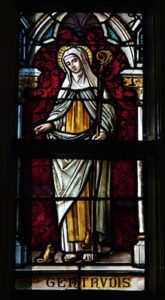 This case of the Belgian Gertrude of Nivelles (628-659 c.e.), represented here on glass window, was a bad omen for the future of the white race. A cute nymphet taking perpetual vows of chastity? Compare it with David Lane’s 14 words! One could imagine the Jewish or Moorish nymphs and nymphets of the nascent Islam of that time taking perpetual vows of virginity! But the most pathetic thing is that, even today, the so-called defenders of the Aryan haven’t been able to repudiate this whole Catholic thing that caused so much damage with its vows of celibacy. Deschner continues:
This case of the Belgian Gertrude of Nivelles (628-659 c.e.), represented here on glass window, was a bad omen for the future of the white race. A cute nymphet taking perpetual vows of chastity? Compare it with David Lane’s 14 words! One could imagine the Jewish or Moorish nymphs and nymphets of the nascent Islam of that time taking perpetual vows of virginity! But the most pathetic thing is that, even today, the so-called defenders of the Aryan haven’t been able to repudiate this whole Catholic thing that caused so much damage with its vows of celibacy. Deschner continues: